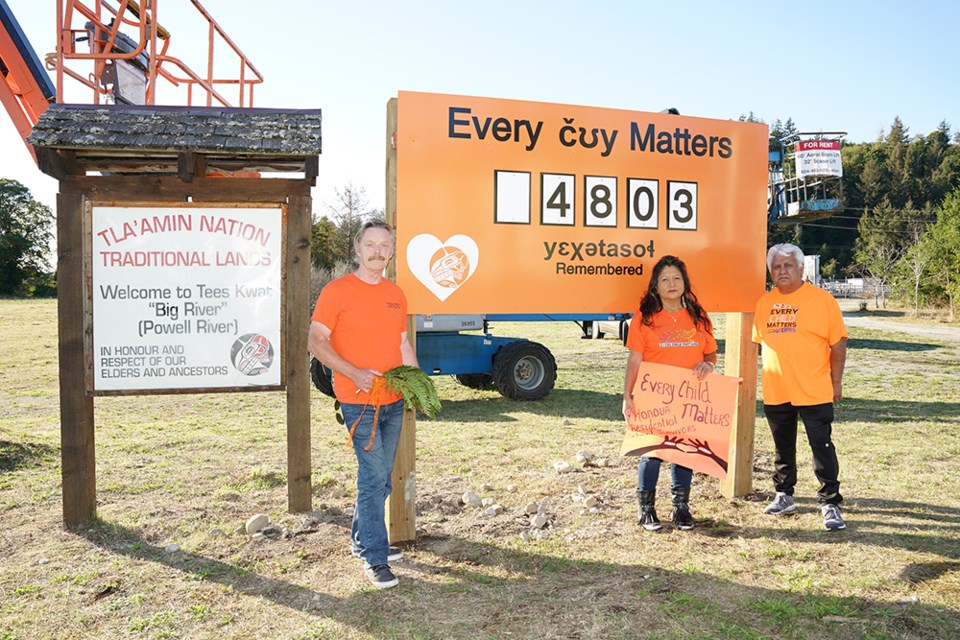National Day for Truth and Reconciliation will be recognized in the community on September 30 with a gathering at Willingdon Beach.
Cyndi Pallen, one of the organizers of the event, whose traditional name is Chennay, said the day will begin with a remembrance in Tla’amin Nation, which is for Indigenous people only. Later in the day there will be a community event.
Pallen said participants will be able to gather in Townsite in their orange shirts, with their signs and walk to Willingdon Beach, where participants will line both sides of the road.
“I thought it might make a bigger impact to have people walking with their orange shirts that day,” said Pallen.
For those joining the Townsite walk, it is recommended that they park in the parking lot adjacent to Dwight Hall and make their way to the old hospital site in Townsite, which is Tla’amin Nation land. There is a sign on the property that states every child matters, said Pallen. The walkers are scheduled to depart for Willingdon Beach at 3:30 pm.
Pallen said the walk and the Willingdon Beach event are to do work in the broader community to bring light to the Orange Shirt Day.
“We’re going to reach out to the community,” said Pallen. “I think there were almost 200 people the last time we did this.
“We’re going to conduct a small ceremony at Willingdon Beach. We’re going to be standing for a longer period of time. The first time we did this there were 215 children found and now it’s past 6,000, but that includes the United States. We’ll probably stand in silence for almost seven minutes.”
Pallen said there will be no stories shared at the gathering.
“It will basically be the period of silence and sharing a couple of songs with the drums,” said Pallen.
She said anyone who wants to show up and show support is welcome at the event. It is hoped that a very visible show of support can be organized for the day for truth and reconciliation.
She said that through hɛhɛwšin, which is the community movement that orchestrated the carving of a cedar canoe for the Tla’amin people as an act of reconciliation, relations have been built with Indigenous and non-Indigenous people.
“In saying that, some of our people are still going through a lot, so we are always careful about what we’re doing and how we’re doing it because we don’t want to raise any concerns from our people,” said Pallen. “It works both ways, really, because you have non-Indigenous people wondering what the big deal is, and then our people, going through all the emotions. I’m always careful about how things will be done.
“I thought if people were there to help support it, they are going to raise awareness for themselves. Some of them heard the stories the last time and were deeply touched by it. They appreciated people sharing. The last time, I think it awakened a lot of stuff for people and that’s what we need to be careful of. We can go to that place and visit that timeframe and the emotions around it, but the important part is bringing people back to the present so we’re not leaving them in a place where they are sad, or grieving.”
A lot of preparation will be going into the event. Pallen said cedar is being wrapped with orange ribbons and orange shirts with pins are being prepared.
She said residential schools in Canada have a long history, going back to the late 1800s, and children as young as four years old were taken from their families.



